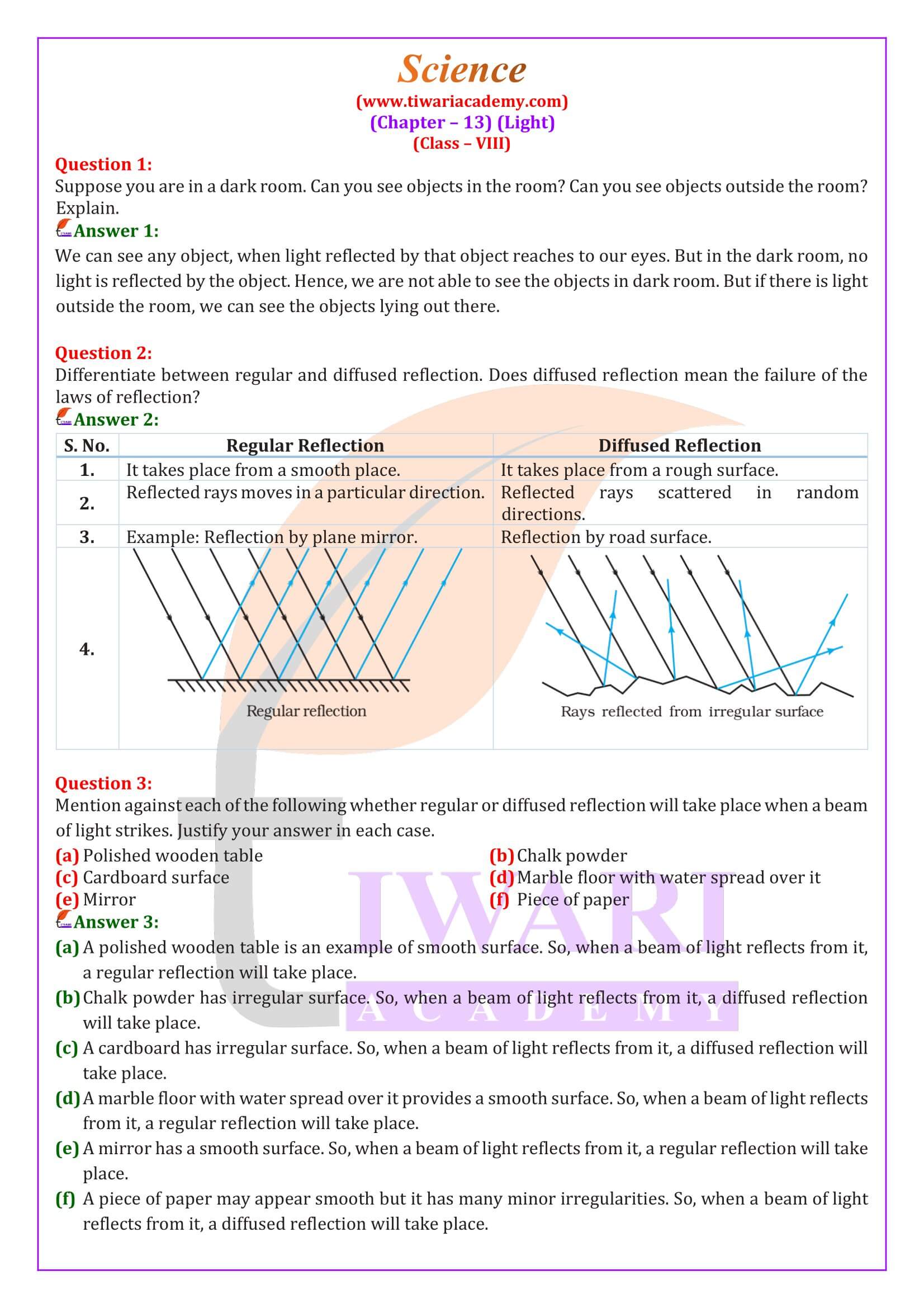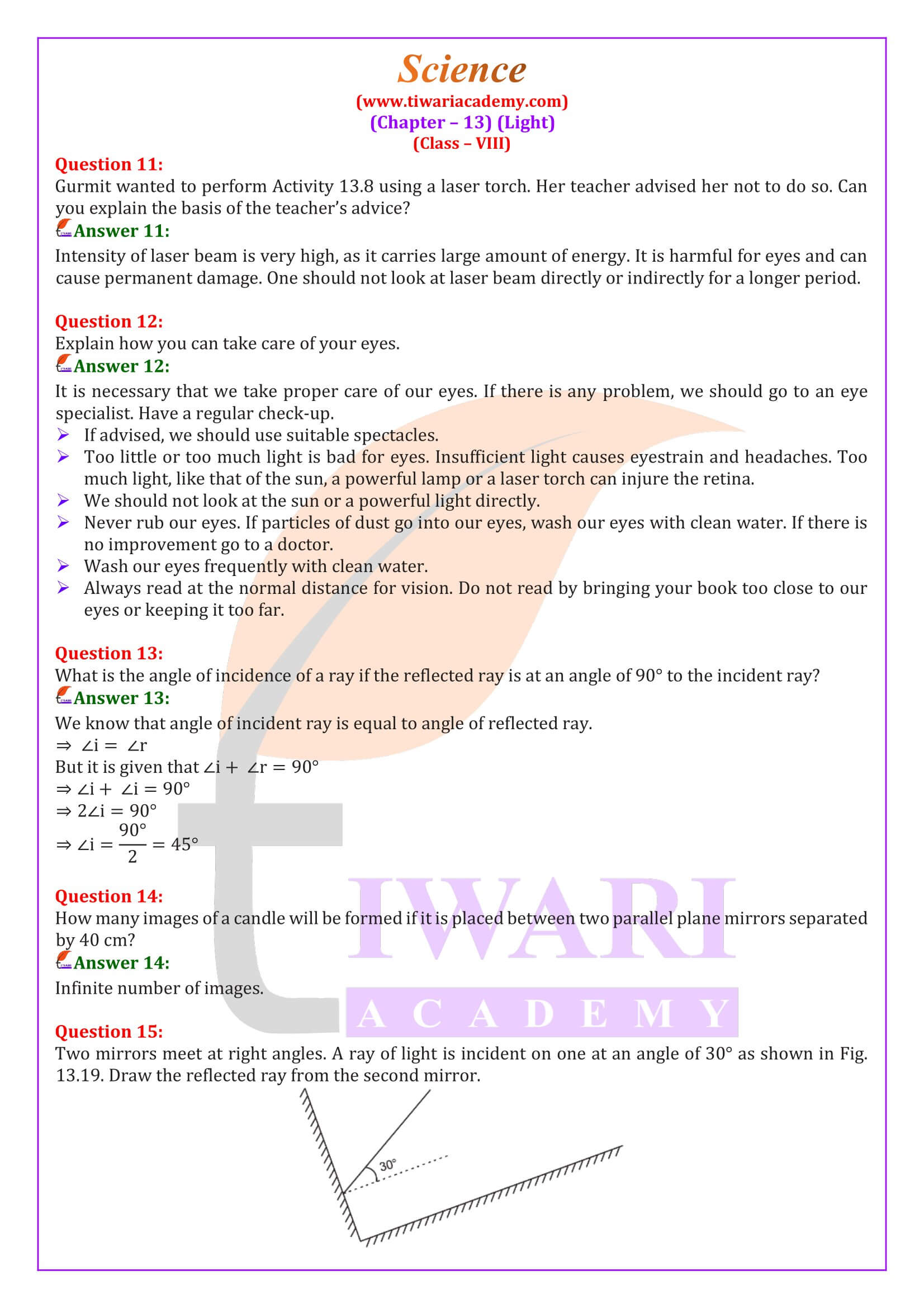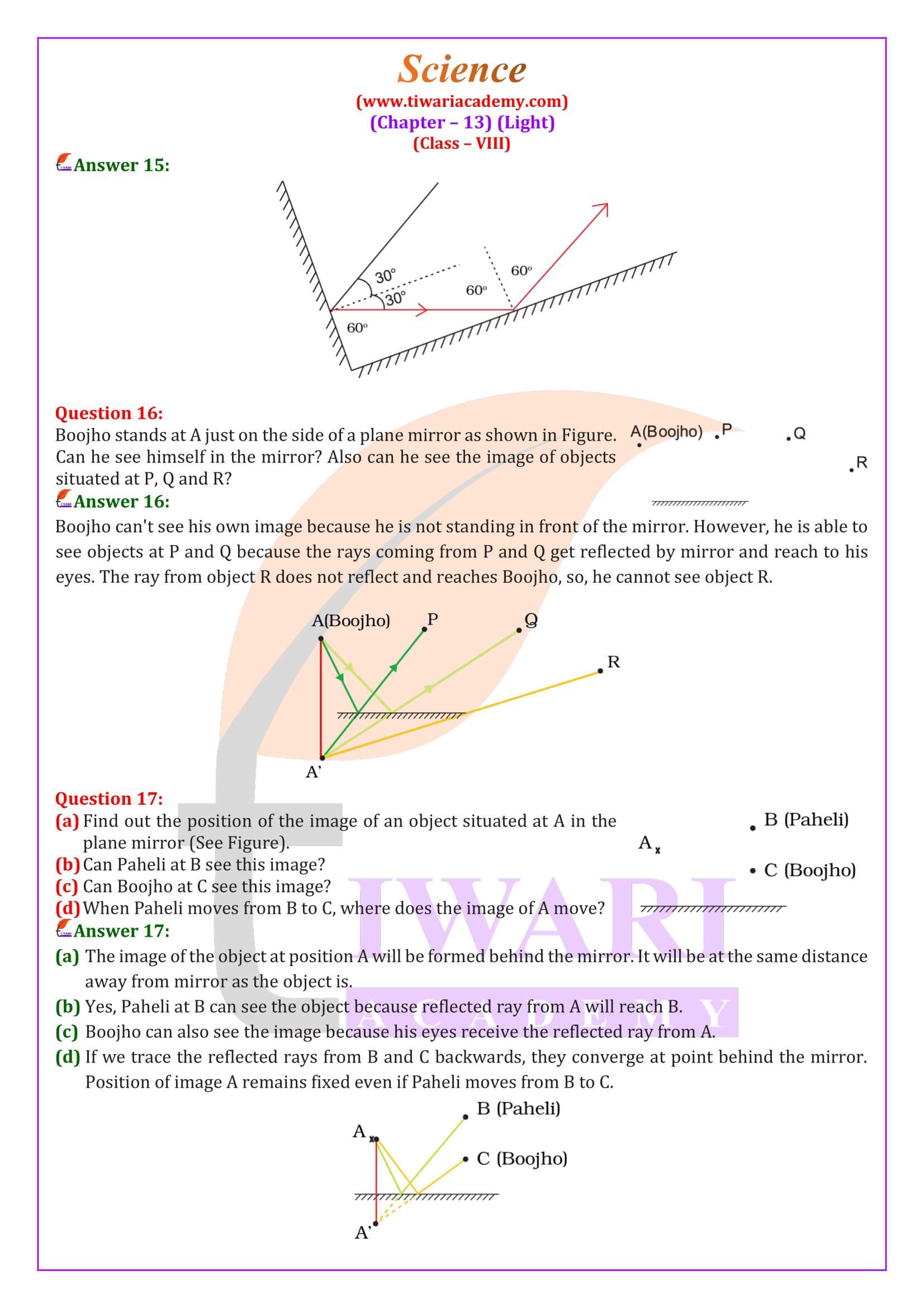Question Wise Class 8 Science Chapter 13 Solutions
Class 8 Science Chapter 13 NCERT Answers
Class 8 Science Chapter 13 in Hindi Medium
Class 8 Science Chapter 13 MCQ
Class 8 Science NCERT Book Download
Class 8 Science Chapter 13 Exemplar Book
Class 8 Science Chapter 13 Exemplar Answers
Class 8 Science NCERT Solutions
Class 8 all Subjects NCERT Solutions
NCERT Solutions for Class 8 Science Chapter 13 Light in Hindi and English Medium (Adhyay 13: Prakash) to Study online or View in Video Format or download free in PDF file format for new academic session 2025-26 based on new CBSE Syllabus. NCERT Solutions is prepared on the basis of latest NCERT Books. All the solutions and Offline apps are following the latest CBSE Syllabus 2025-26.
| Class: 8 | Science |
| Chapter 13: | Light |
| Content Mode: | PDF, Text and Videos |
| Academic Session: | 2025-26 |
| Medium: | English and Hindi |
Class 8 Science Chapter 13 in English and Hindi Medium
- Class 8 Science Chapter 13 Question Answers
- Class 8 Science Chapter 13 in Hindi Medium
- Class 8 Science Chapter 13 MCQ
- Class 8 Science Chapter 13 NCERT Book
- Class 8 Science Chapter 13 Exemplar Book
- Class 8 Science Chapter 13 Exemplar Answers
- Class 8 Science NCERT Solutions
- Class 8 all Subjects NCERT Solutions
Class 8 Science Chapter 13 Solution and Explanation in Hindi
Class 8 Science Chapter 13 Answers
NCERT Solutions for Class 8 Science Chapter 13 Light is given below to download in PDF or view online without downloading. Visit to Discussion Forum to ask your doubt and reply to your classmates.
Class 8 Science Chapter 13 Solution and Explanation
Class 8 Science Chapter 13 Important Questions for Practice
Describe the construction of a kaleidoscope.
A kaleidoscope is made up of three rectangular mirror strips joined together to form a prism. These are fix in a circular cardboard like tube or tube of a thick chart paper. The tube is slightly longer than the mirror strips. One end of the tube remains closed by a cardboard disc having a hole in the centre, through which one can see. To make the disc durable, a piece of transparent plastic sheet is pasted under the cardboard disc. At the other end, touching the mirrors, a circular plane glass plate is fixed. On this glass plate several small pieces of coloured glass is placed to form multiple images.
Explain how you can take care of your eyes.
It is necessary that we take proper care of our eyes. If there is any problem we should go to an eye specialist. Have a regular check-up.
If advised, we should use suitable spectacles.
Too little or too much light is bad for eyes. Insufficient light causes eyestrain and headaches. Too much light, like that of the sun, a powerful lamp or a laser torch can injure the retina.
We should not look at the sun or a powerful light directly.
Never rub our eyes. If particles of dust go into our eyes, wash our eyes with clean water. If there is no improvement go to a doctor.
Wash our eyes frequently with clean water.
Always read at the normal distance for vision. Do not read by bringing your book too close to our eyes or keeping it too far.
State the laws of reflection.
Laws of reflection:
The angle of incidence is always equal to the angle of reflection.
The incident ray, the reflected ray and the normal to the surface at the point of incidence lie in the same plane.
Gurmit wanted to perform Activity 16.8 using a laser torch. Her teacher advised her not to do so. Can you explain the basis of the teacher’s advice?
Intensity of laser beam is very high, as it carries large amount of energy. It is harmful for eyes and can cause permanent damage. One should not look at laser beam directly or indirectly for a longer period.
Class 8 Science Chapter 13 MCQ with Answers
1. Part of the eye which controls the light entering is called
(a) iris
(b) cornea
(c) lens
(d) retina
2. Which of the following statements is correct regarding rods and cones in the human eye?
(a) Cones are sensitive to dim light.
(b) Cones are sensitive to bright light.
(c) Rods are sensitive to bright light.
(d) Rods can sense colour.
3. We can see a non-luminous object when light:
(a) emitted by the object falls on the eye.
(b) is reflected from the object towards our eye.
(c) completely passes through the object.
(d) gets completely absorbed by the object.
4. How many times is a ray of light reflected by two plane mirrors placed parallel and facing each other?
5. The distance between the object and its image formed by a plane mirror appears to be 24 cm. What is the distance between the mirror and the object?
6. What kind of lens is there in our eyes? Where does it form the image of an object?
7. How is the phenomenon of reflection used in making a kaleidoscope? What are the applications of a kaleidoscope?
8. Which part of the eye gets affected if someone is suffering from cataract? How is it treated?
Answers of Important Questions
1 (a)
2 (b)
3 (b)
4 Infinite number of times.
5 12 cm.
6 The type of lens in our eyes is convex. It forms images on the retina.
7 The kaleidoscope gives a number of images formed by reflection from the mirrors inclined to one another. Designers and artists use kaleidoscope to get ideas for new patterns to design wallpapers, Jewellery and fabrics.
8 In people suffering from cataract the eye lens becomes clouded. Cataract is treated by replacing the opaque lens with a new artificial lens.






